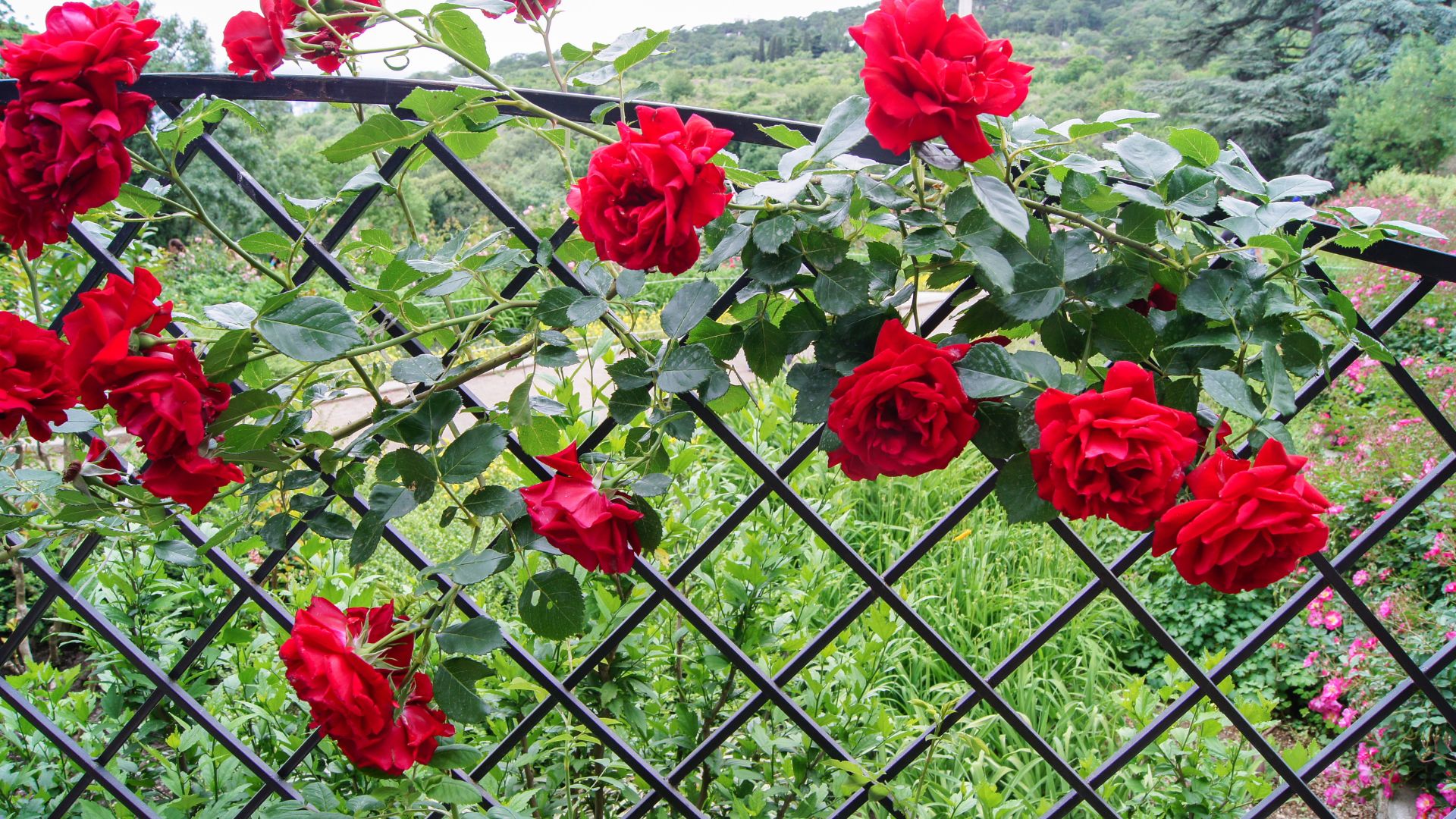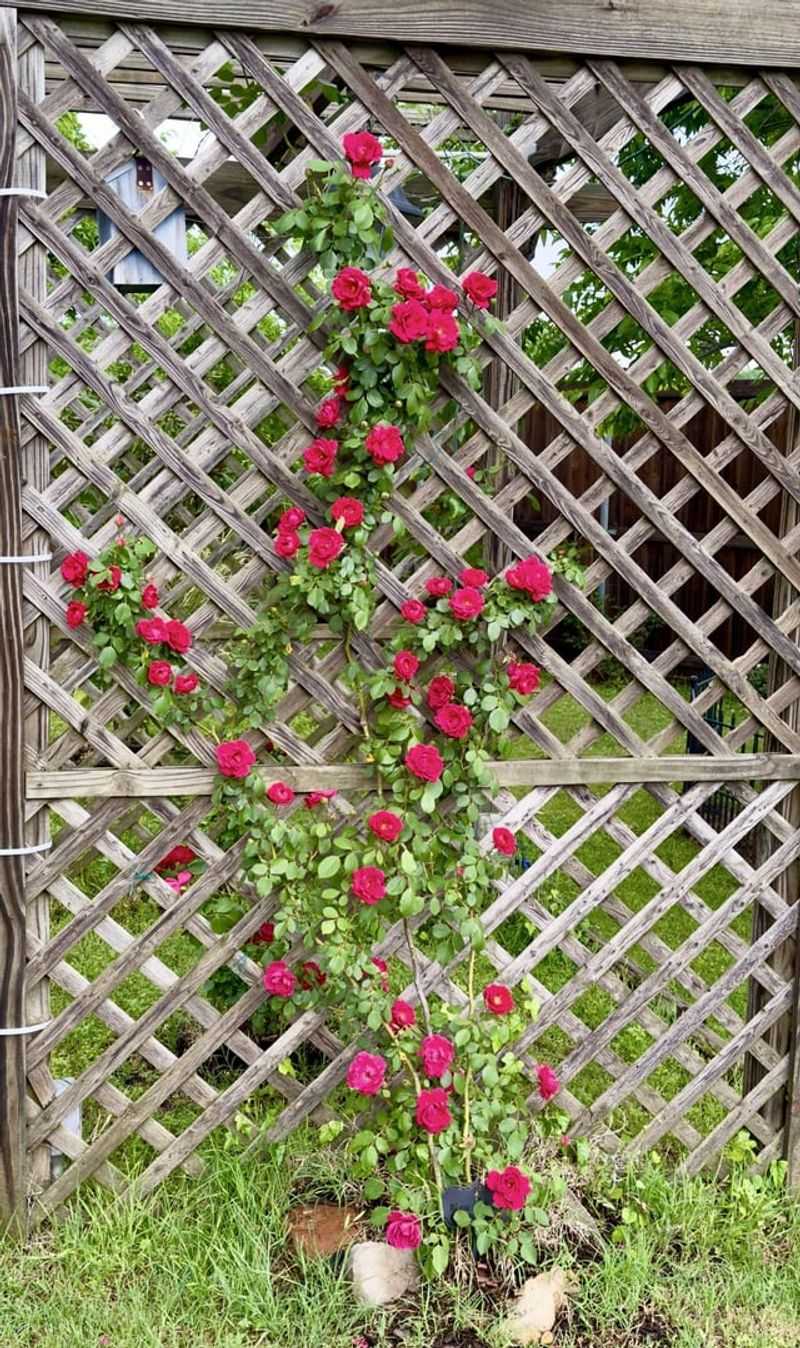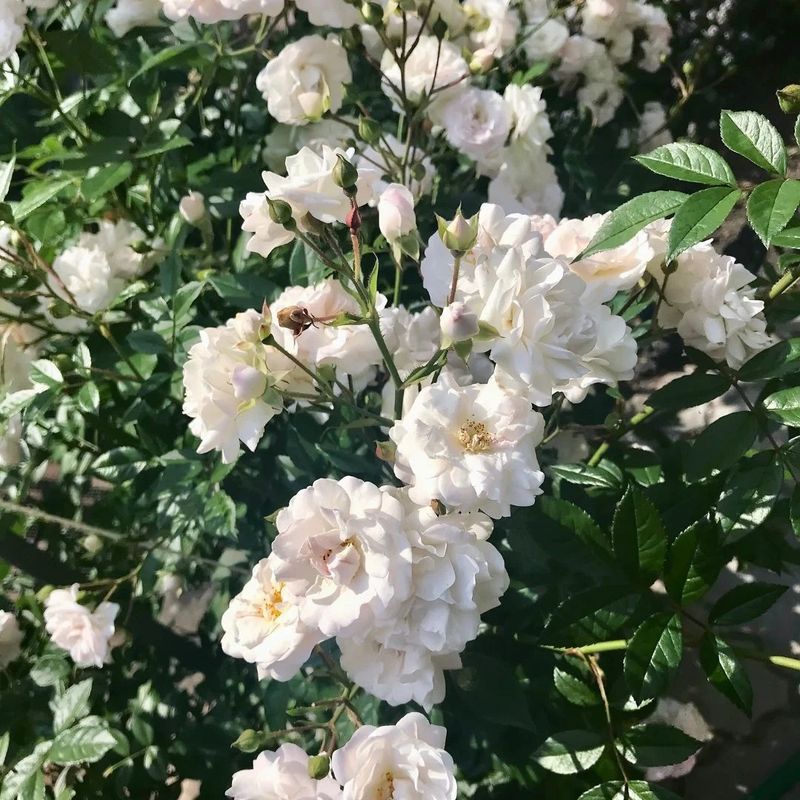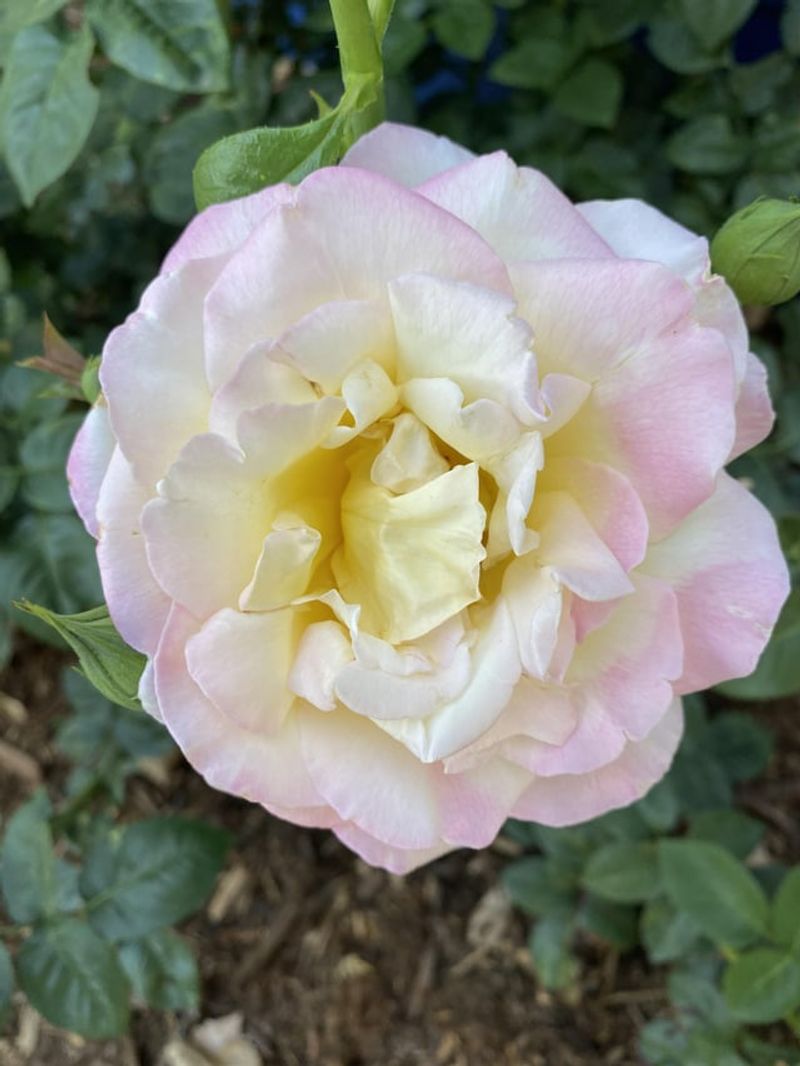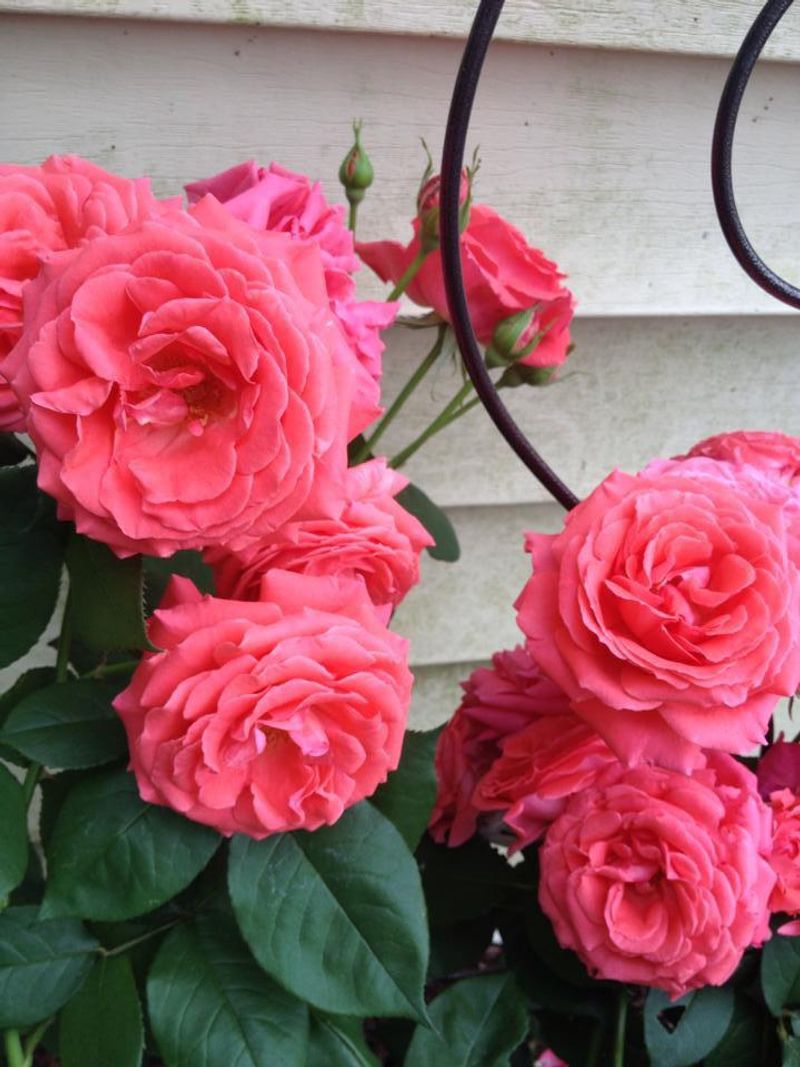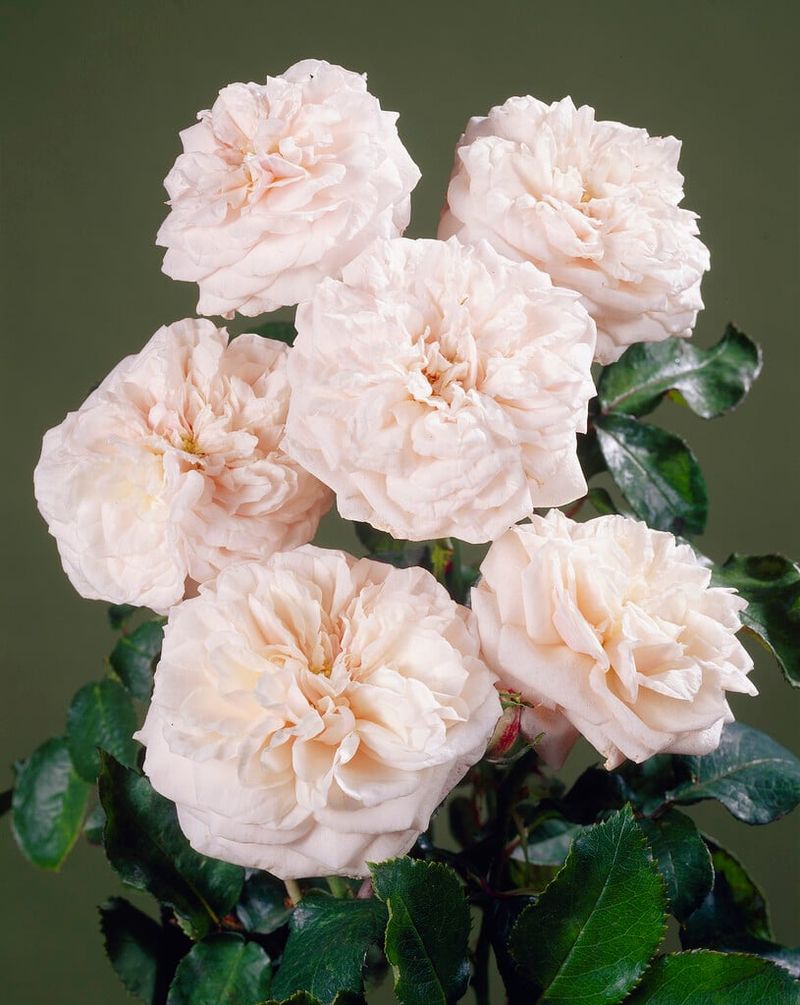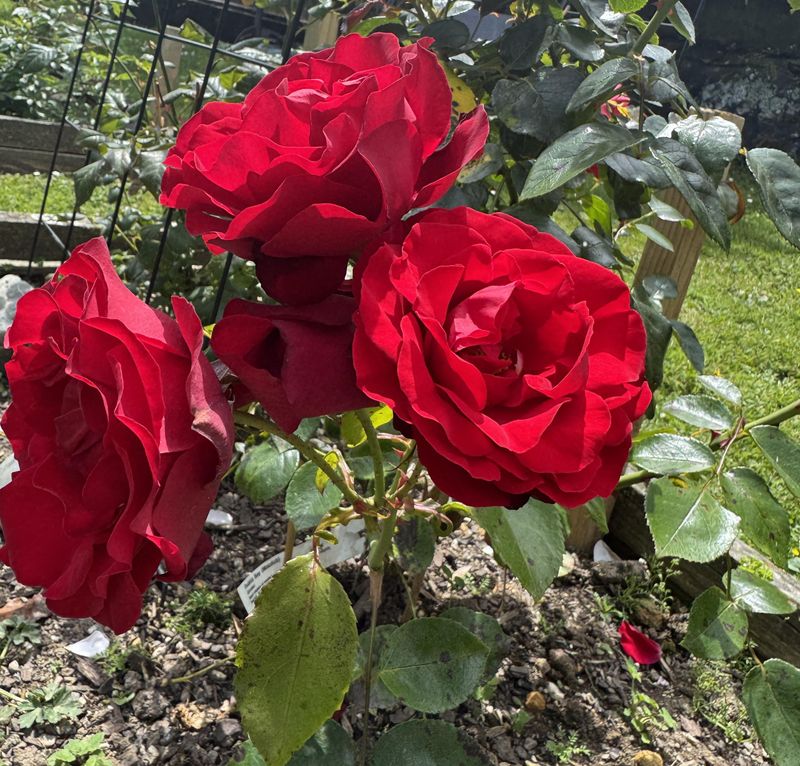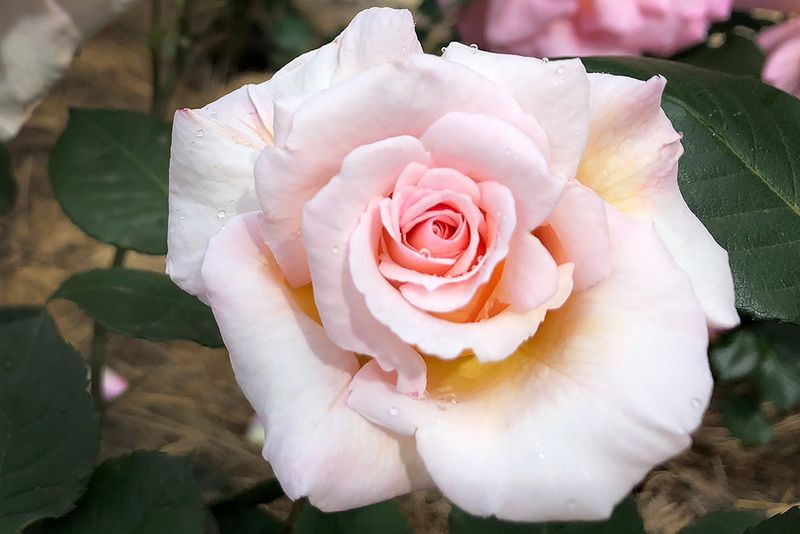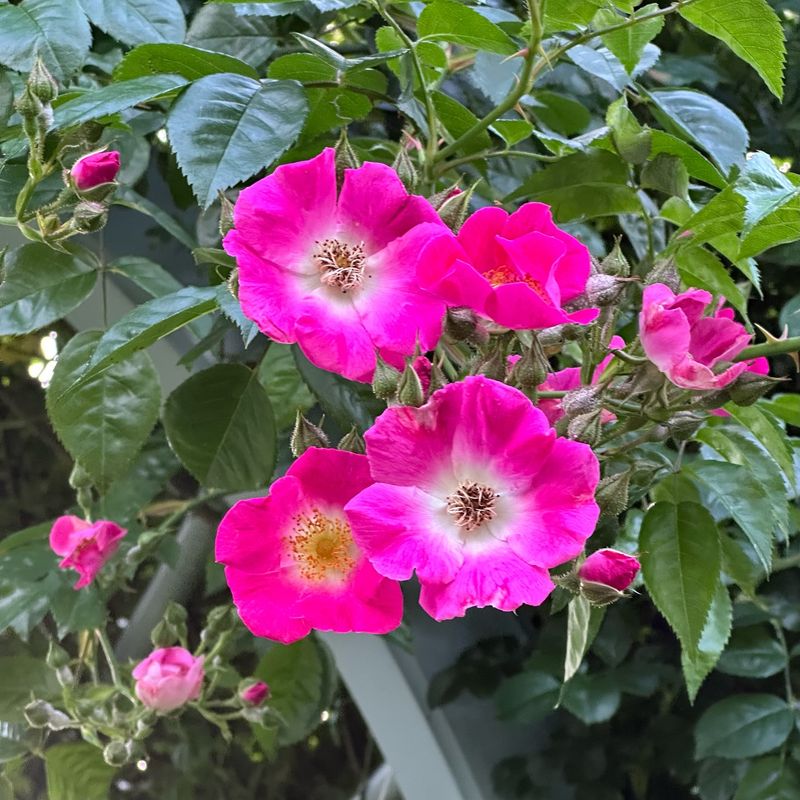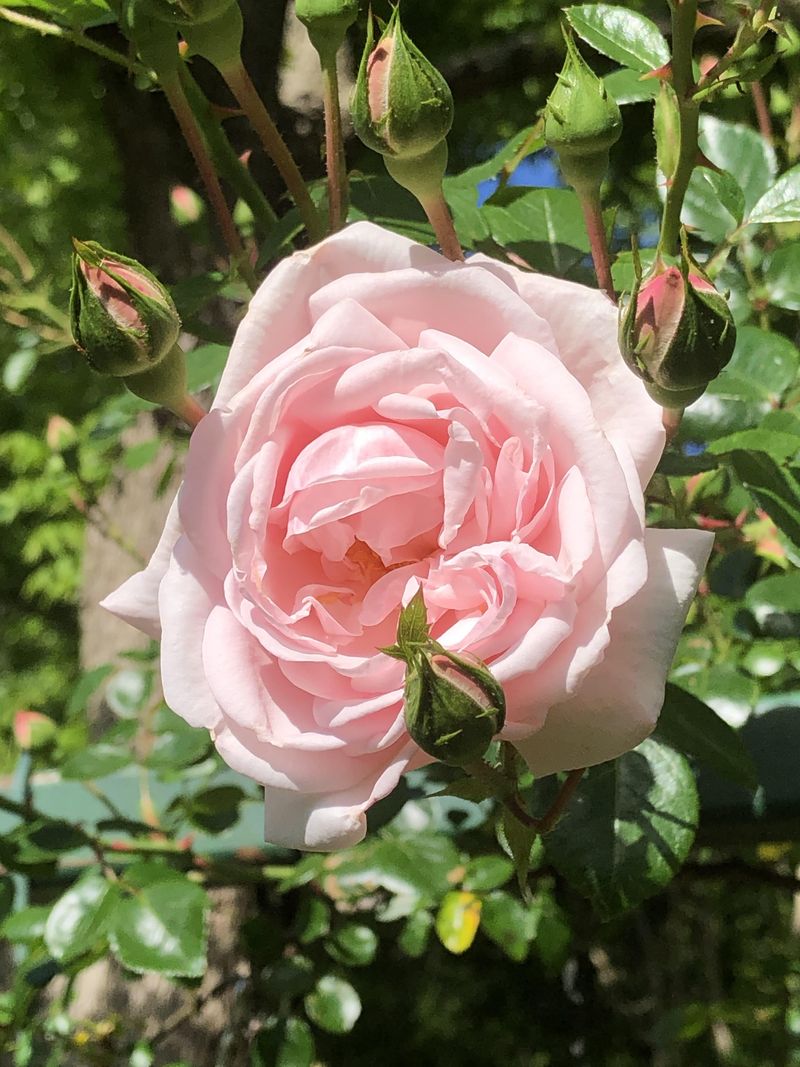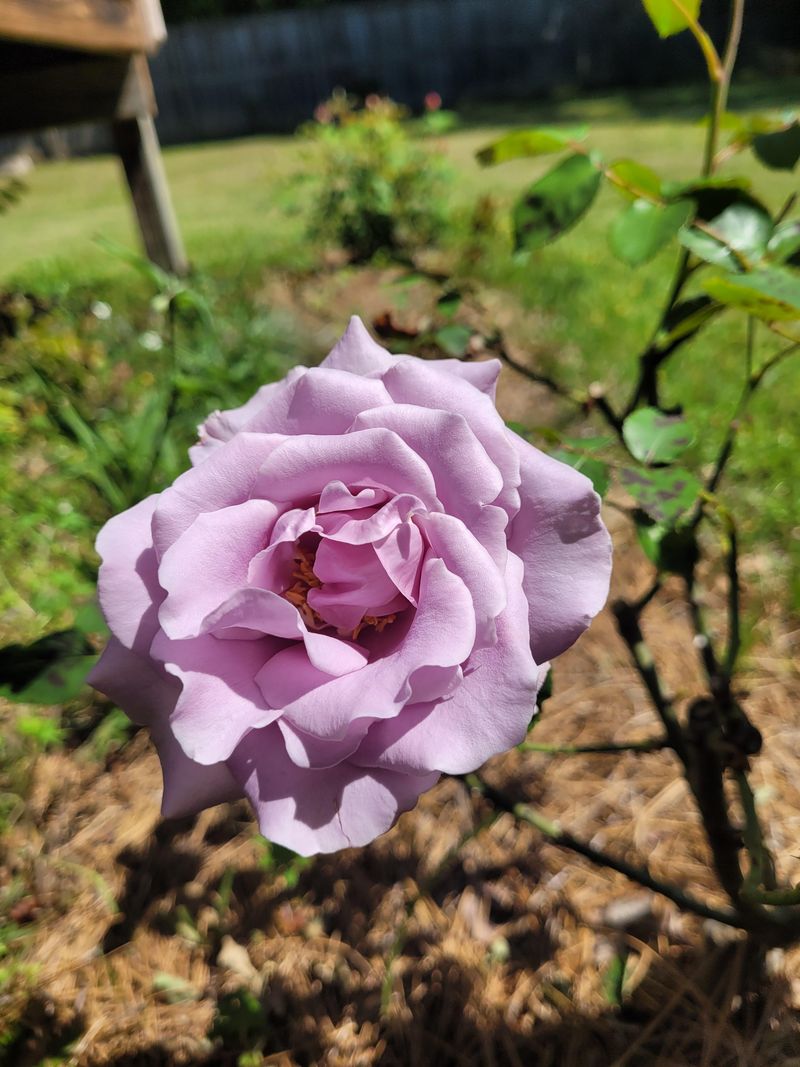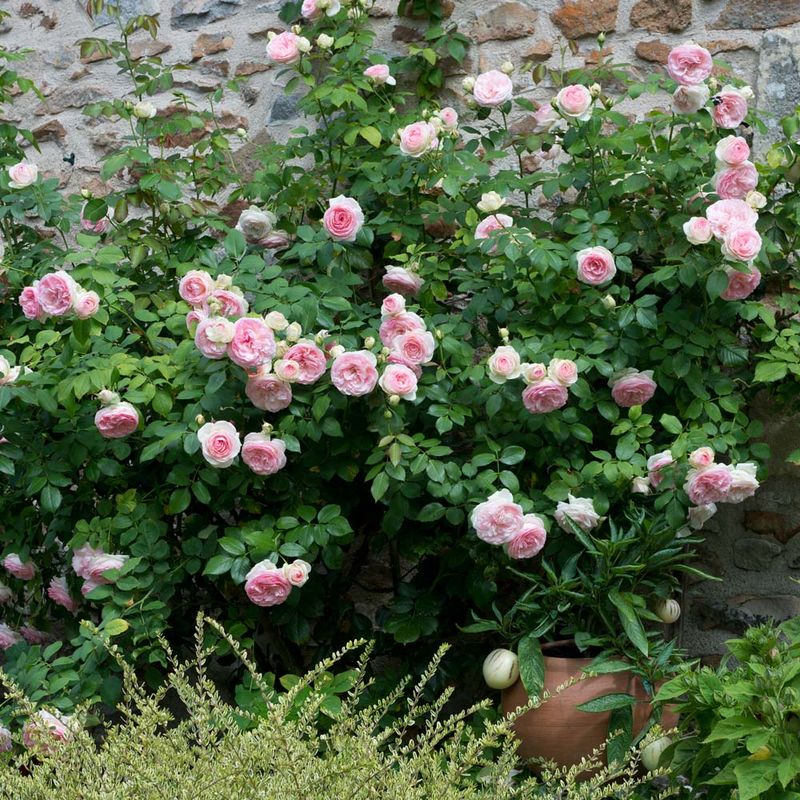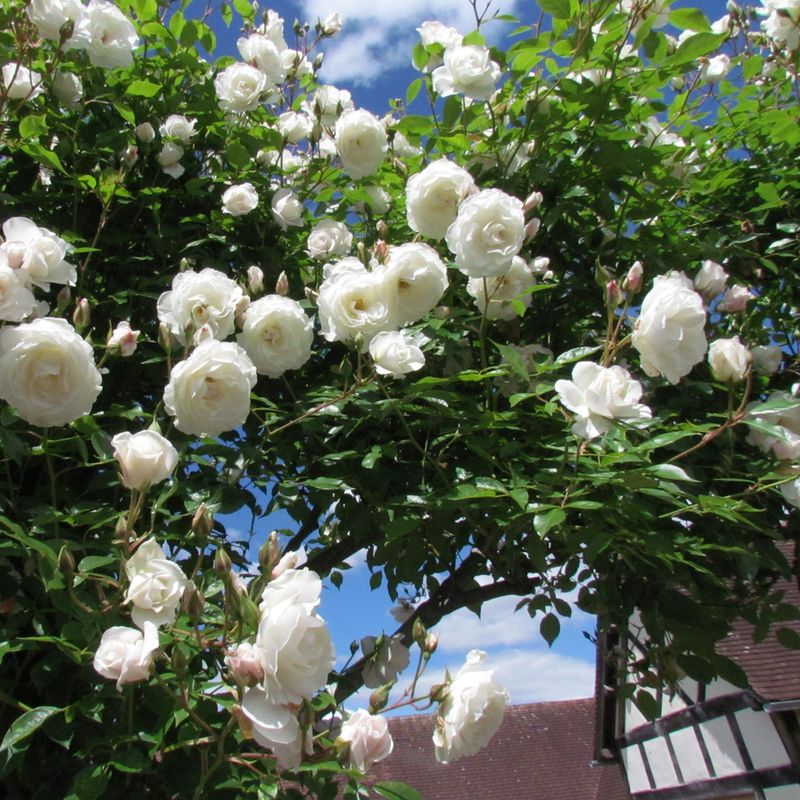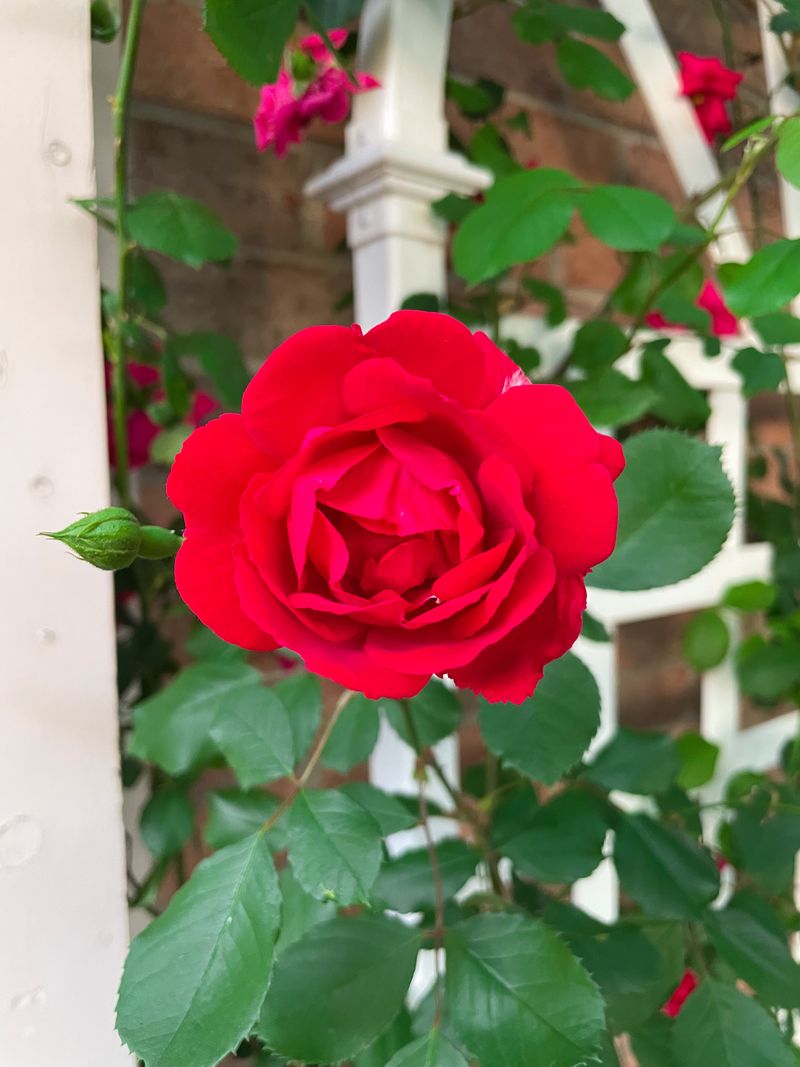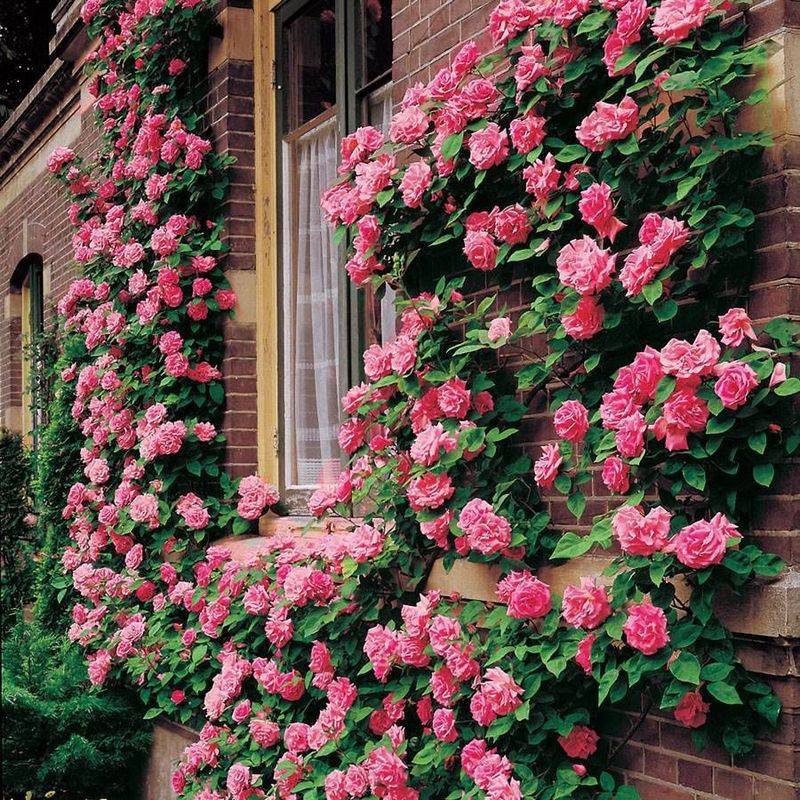Growing climbing roses sounds like a dream, right? They can turn a plain fence or wall into a romantic, flower-filled escape. But if you’ve ever planted one and waited… and waited… for blooms, you’re not alone. It’s frustrating to pour time and care into a rose that barely flowers—or doesn’t bloom at all.
Some varieties just don’t live up to the hype, no matter how much love you give them. I’ve learned that the hard way, too. The good news is, some climbing roses are true performers and worth every bit of space they take.
Knowing which ones to trust can save you years of trial and error. And once you find the right ones, the payoff is pure magic.
1. Blaze: The One-Hit Wonder
Blaze climbing roses burst into spectacular crimson displays in spring, then disappear into green anonymity for the rest of the growing season. First-time rose growers often select Blaze for its affordable price and stunning initial bloom, only to be disappointed when the flowers fail to return.
The main culprit is Blaze’s genetic makeup as it’s primarily a once-blooming variety. No matter how perfectly you care for it, the rose simply isn’t programmed to produce continuous flowers throughout summer and fall.
For reliable red blooms, plant Don Juan instead. This climbing rose produces deep velvety red flowers continuously from spring until frost. While it costs slightly more initially, the season-long flowering makes it a better investment for gardeners wanting consistent color.
2. Lady Banks: The Zone Deceiver
Lady Banks roses create heartbreak in northern gardens where they’re often sold despite being unsuitable for colder climates. In USDA zones 6 and below, these roses frequently die back to the ground each winter, never reaching the size needed to produce their famous springtime waterfall of yellow or white blooms.
The issue stems from nurseries selling these warm-climate roses nationwide without adequate warnings about their cold sensitivity. Even when they survive winter, the plants spend most of their energy regrowing stems rather than developing flower buds. Gardeners often wait years for blooms that never materialize.
William Baffin offers a better option for cold-climate gardeners seeking a climbing rose. This extremely hardy variety survives even zone 3 winters without significant dieback and reliably produces deep pink semi-double flowers. Unlike Lady Banks, it won’t require years of growth before rewarding you with blooms.
3. Climbing Peace: The Reluctant Riser
These roses frustrate gardeners who purchase them expecting the same reliable blooming as the famous bush variety. Despite sharing genetics with its popular parent, this climbing version often produces flowers that appear primarily on the uppermost portions of the plant, creating a disappointing “lollipop” effect.
The problem lies in the plant’s growth habit – it wants to grow tall before setting blooms. This means gardeners must wait several years before seeing significant flowering, and even then, the lower portions remain stubbornly green.
Golden Showers offers a more satisfying alternative for yellow climbing roses. This variety blooms along the entire length of its canes, not just at the top, providing a fuller display. Its flowers face outward rather than downward, making them more visible, and it begins flowering much earlier in its life cycle.
4. Climbing Cecile Brunner: The Space Hog
Climbing Cecile Brunner roses grow aggressively but bloom disappointingly compared to their rampant growth. Gardeners plant this rose expecting dainty pink flowers throughout the season, only to watch it send out 20-foot canes with minimal blooming except during a brief spring flush.
The main issue is the rose’s excessive vigor combined with its primarily once-blooming nature. It requires enormous space and very specific pruning to perform well.
For smaller spaces, Seven Sisters (Rosa multiflora ‘Platyphylla’) provides a better option. While still vigorous, it stays more manageable at 10-12 feet and produces clusters of small roses that change color as they age, creating a multicolored effect.
5. Climbing America: The Heat Sulker
Climbing America roses often disappoint in warmer climates despite their promising catalog descriptions. This coral-pink climber produces beautiful spring blooms, then stubbornly refuses to flower during summer heat, precisely when garden color is most needed.
The rose’s heat sensitivity causes flower buds to blast (die before opening) when temperatures exceed 85°F. Many southern gardeners waste seasons trying to coax blooms from this variety through summer, not realizing the problem is genetic rather than cultural.
Altissimo provides a better choice for hot-climate gardens. This red climbing rose maintains its flowering ability and color quality even during intense summer heat. Its single, velvety red blooms with gold centers continue appearing reliably when Climbing America has long since stopped performing.
6. Climbing Souvenir De La Malmaison: The Disease-Prone Diva
These roses tantalize with their perfectly formed pale pink blooms, but deliver constant disappointment through their extreme susceptibility to every rose disease imaginable. Black spot, powdery mildew, and rust attack these plants relentlessly, causing buds to fail and flowers to brown before fully opening.
The rose’s Bourbon heritage contributes to its disease issues. Its densely packed petals trap moisture, leading to botrytis blight that turns promising buds to mush in rainy weather. Many gardeners find themselves applying fungicides weekly yet still losing most potential blooms to disease.
For similar old-rose charm with better disease resistance, plant Climbing Pinkie instead. This rose produces clusters of small, pink, semi-double flowers that aren’t as affected by rain and humidity. Its naturally better disease resistance means more flowers make it to full bloom without requiring chemical intervention.
7. Dublin Bay: The Deer Candy
Dublin Bay climbing roses break gardeners’ hearts in deer-populated areas. Despite their reputation for vibrant red blooms, these roses frequently end up as expensive deer food rather than garden showpieces. Deer consistently target Dublin Bay over other varieties, often eating flower buds before they can open.
The rose’s particularly sweet fragrance and tender new growth make it irresistible to deer. Many gardeners report that deer will ignore other roses but make special trips to devour Dublin Bay. Even diligent application of repellents often fails to protect this deer favorite.
Dortmund offers a better alternative for gardens with deer pressure. This red climbing rose contains higher levels of naturally bitter compounds that deer find less palatable. While no rose is completely deer-proof, Dortmund’s slightly more bitter taste means more buds survive to bloom.
8. Climbing Ophelia: The Weak Performer
Climbing Ophelia roses seduce with promises of delicate peach-pink blooms but deliver disappointingly sparse flowers on weak, floppy stems. This climbing sport of a once-popular hybrid tea inherited all the parent’s disease susceptibility while losing much of its flowering ability.
The rose’s primary problem is poor vigor combined with thin stems that can’t support the weight of its blooms. Even when flowers do appear, they often hang downward or break off in light winds.
Abraham Darby makes a much better choice for peachy-pink climbing roses. This David Austin variety produces abundant flowers on stronger stems that hold the blooms upright. Its vigorous growth quickly covers supports while its stronger disease resistance ensures more buds develop into full flowers.
9. American Pillar: The Brief Beauty
American Pillar roses create initial excitement followed by lasting disappointment. This rose produces a spectacular two-week display of bright pink flowers with white centers that stops traffic, then contributes nothing but green foliage for the remaining 50 weeks of the year.
The fundamental issue is that American Pillar is genetically a once-blooming rambler, not a repeat-flowering climber. No amount of fertilizer, pruning skill, or perfect conditions will make it bloom again after its brief spring show.
For longer-lasting pink color, plant Climbing Cecile Brunner instead. While not as intensely colored as American Pillar, this climbing rose produces waves of small pink flowers repeatedly throughout the growing season.
10. Dr. W. Van Fleet: The Thorny Monster
These roses create maintenance nightmares despite their pretty pale pink blooms. This aggressive climber produces viciously thorny canes that seem designed specifically to draw blood during pruning attempts. The thorns are so numerous and sharp that many gardeners eventually abandon maintenance altogether.
Beyond its defensive nature, this rose blooms only once per year despite often being sold as a repeat bloomer. The combination of dangerous thorns and limited flowering makes it a high-cost, low-reward addition to gardens.
New Dawn, despite its own limitations, offers a better alternative for pale pink climbing roses. While still thorny, its prickles are less numerous and aggressive, making maintenance less hazardous. It also provides at least some repeat flowering throughout the season.
11. Climbing Sterling Silver: The Finicky Failure
These roses tempt with promises of unique lavender blooms but deliver frustration through their extreme growing requirements. This climbing sport of a notoriously difficult hybrid tea inherits all its parent’s problems while adding climbing-specific challenges that make successful flowering nearly impossible.
The rose demands perfect conditions—exactly the right amount of sun (not too much, not too little), precisely balanced nutrition, and perfect disease prevention. Even experienced rosarians struggle to meet its needs.
For purple-toned flowers with less drama, plant Veilchenblau instead. While only once-blooming, its dramatic display comes without the constant care requirements of Sterling Silver, and its color holds better in various light conditions.
12. Eden Climber: The Bloomless Beauty
Eden Climber roses (also sold as Pierre de Ronsard) break gardeners’ hearts nationwide. Seduced by catalog photos showing stems smothered in romantic, cabbage-shaped pink blooms, gardeners instead get plants that produce abundant foliage but stubbornly few flowers despite perfect care.
The rose’s primary issue is its extreme sensitivity to growing conditions. It requires very specific light levels, temperatures, and humidity to set buds properly. Even slight deviations cause it to abort flower buds in favor of producing more leaves.
For more reliable romantic blooms, plant Climbing Bourbon Queen instead. This rose produces similarly old-fashioned, full-petaled pink flowers but with much less environmental sensitivity. It sets buds more reliably across a wider range of conditions and its slightly smaller flowers are less prone to rain damage.
13. Climbing Iceberg: The Reliable White Wonder
Climbing Iceberg stands out as a truly reliable white climbing rose despite its disease challenges. Unlike many disappointing climbers, this rose produces waves of pristine white blooms from spring until frost with minimal care requirements. Its flowering isn’t limited to spring or dependent on perfect conditions.
The secret to its reliability lies in its floribunda heritage, which programs it for continuous bloom cycles rather than the one-and-done flowering of many climbers. Many gardeners appreciate how it produces flowers along the entire length of its canes rather than just at the tips.
For best results, plant Climbing Iceberg where it receives morning sun but afternoon shade in hot climates. This positioning minimizes disease pressure while maximizing bloom production. Regular deadheading encourages more flowering cycles, though the plant will bloom repeatedly even without this maintenance.
14. Don Juan: The Dependable Red Performer
These roses deliver on their promise of dramatic red blooms unlike many disappointing varieties. This climber produces velvety crimson flowers with a rich damask fragrance repeatedly throughout the growing season. The deep red color doesn’t fade even in full sun, maintaining its intensity from bud to petal drop.
The rose’s success stems from its excellent heat tolerance and disease resistance compared to other red climbers. Even in challenging conditions, Don Juan continues flowering when other varieties have given up.
Plant Don Juan where its fragrance can be appreciated near seating areas or windows. While it performs best with six hours of sun, it tolerates partial shade better than many climbing roses. Regular feeding with rose-specific fertilizer maximizes its already impressive bloom count throughout the season.
15. Zephirine Drouhin: The Thornless Triumph
Zephirine Drouhin climbing roses prove that reliability doesn’t require compromise. This exceptional climber produces fragrant cerise-pink blooms continuously from spring through fall while offering the unique advantage of completely thornless stems.
The rose’s success in diverse gardens comes from its remarkable shade tolerance – it blooms well with as little as four hours of direct sun. This adaptability makes it perfect for challenging north-facing walls or partially shaded areas where other climbing roses fail.
For maximum flowering, plant Zephirine Drouhin in soil enriched with compost and maintain regular watering during dry periods. While it doesn’t require perfect conditions to bloom well, consistent moisture helps extend its flowering period.

